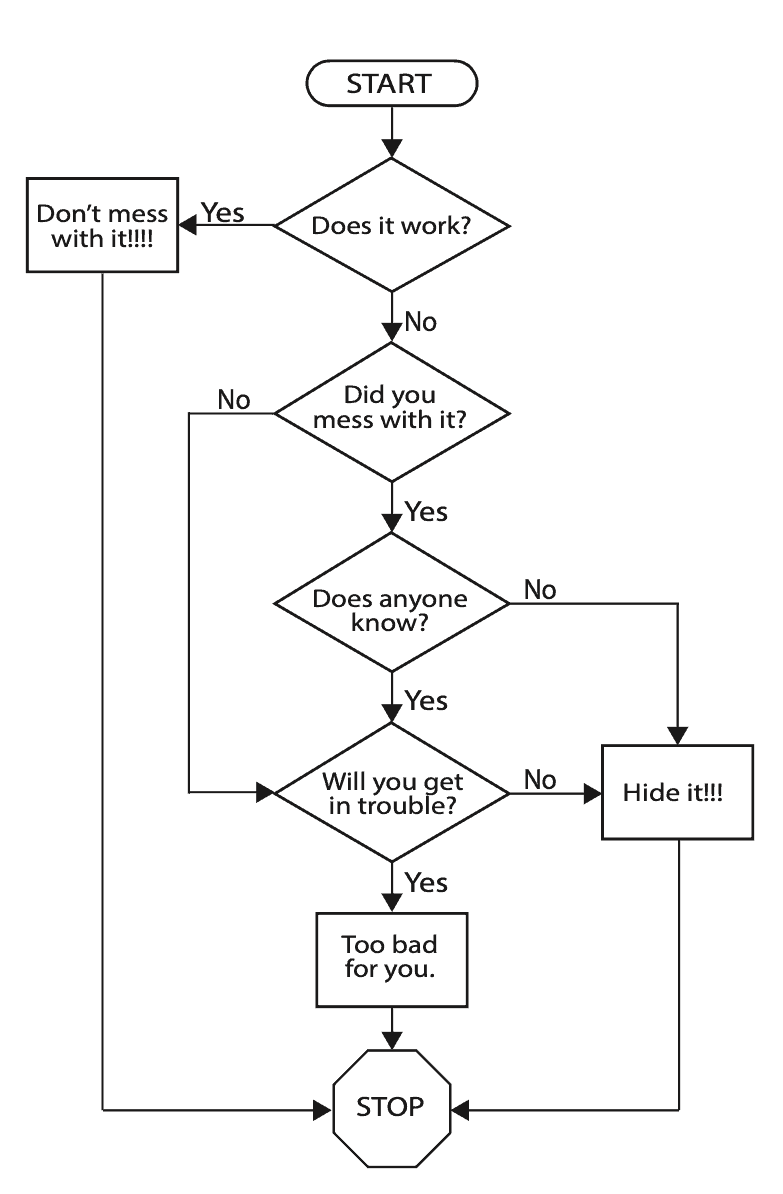Are You Using TapRooT® Root Cause Analysis the Right Way for Simple Incident Investigation?

Is that diagram your root cause system for simple incidents?
Every once in a while, someone tells me that they only use TapRooT® Root Cause Analysis for major accidents. When I ask why, they tell me that TapRooT® RCA is “too hard” for simple investigations. That’s when I know we need a more in-depth conversation.
First, I ask:
”Is preventing major accidents important?”
Of course, 99% of the time, the answer is: “Yes.”
Then I ask about how they plan to prevent them …
The answer usually gets around to learning from PRECURSOR INCIDENTS. Learning from these near-misses that could have been major accidents if a couple more Safeguards had failed is critical to understanding what could go wrong, what could cause those major accidents, and what Safeguards are working (what went right).
Once we establish that learning from these precursor incidents is critical, I ask:
“What is the minimum investigation required to really understand
and fix the causes of these precursor incidents?“
That’s a tougher question. But I’ve previously written an article about it, and you can read it HERE.
That’s when the person replies …
“I didn’t know there was an easy way to apply TapRooT® RCA –
I thought you always had to do the whole seven-step process!”
Probably the biggest simplification in the simple way to use TapRooT® RCA is to STOP the investigation after you gather your initial information and draw your initial SnapCharT® Diagram.
If you find there really isn’t anything important to learn from this investigation … Just STOP.
Second, if you continue with one of these simple investigations, you use a limited set of tools, and you skip the Generic Cause Analysis. This reduces effort considerably.
Finally, in major investigations, you usually have a team do the investigation and have a major management presentation. In a simple investigation, a single individual usually performs the investigation, and their work is reviewed by an expert facilitator and then informally approved by the appropriate manager.
Want to learn more about using TapRooT® for simple investigations? Read:
Using the Essential TapRooT® Techniques to Investigate
Low-to-Medium Risk Incidents
Or attend one of our public 2-Day TapRooT® Root Cause Analysis Courses (often called the “essentials” course). See the upcoming courses around the world by CLICKING HERE.







I use TapRoot on all my investigation whether an accident, near miss, or even when the “system” isn’t functioning correctly. I have push back from the management but not from the line workers/employees. We are a non-profit Assisted Living operation but do have issues with some aspects of our services to our residents and TapRoot works great!